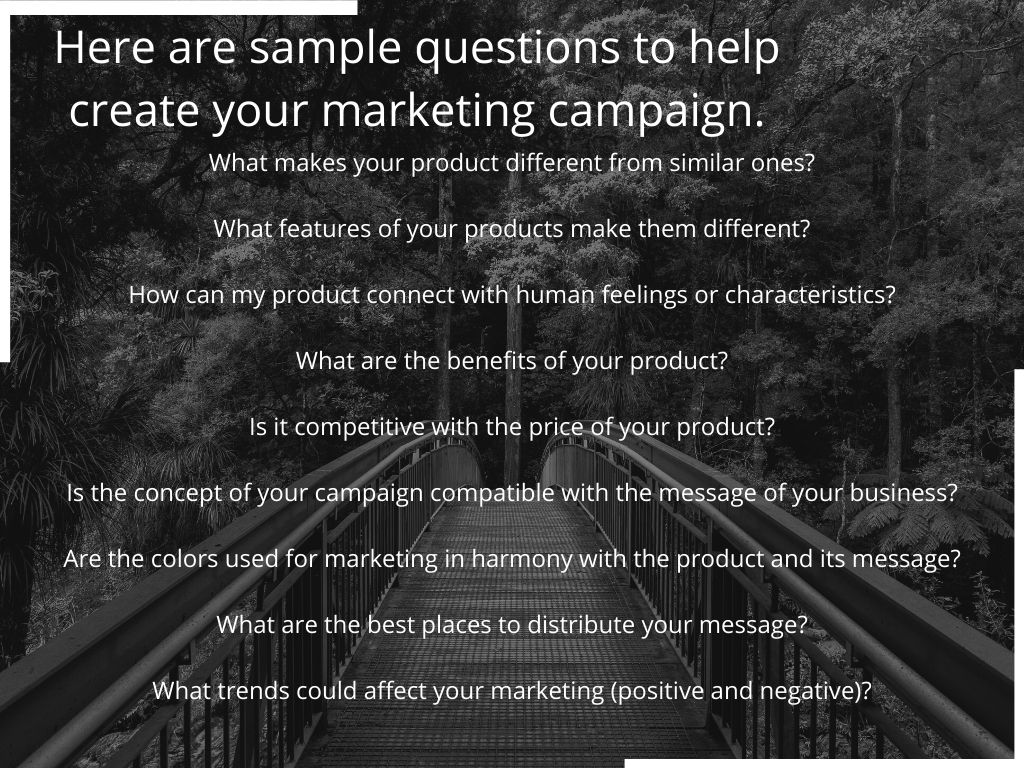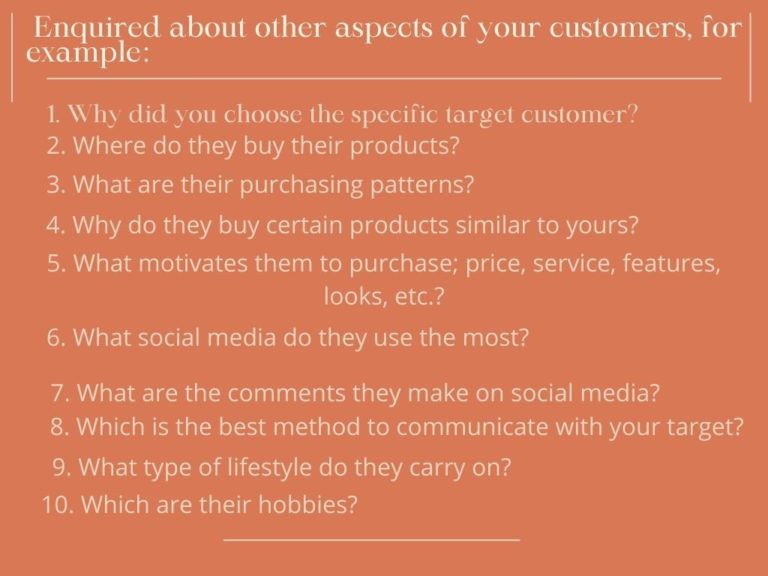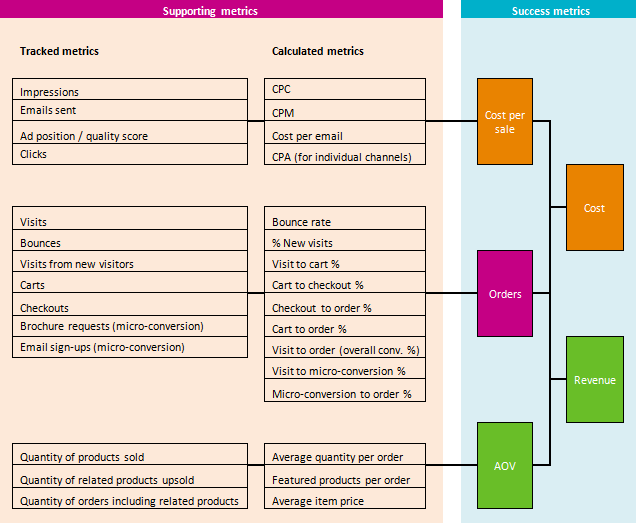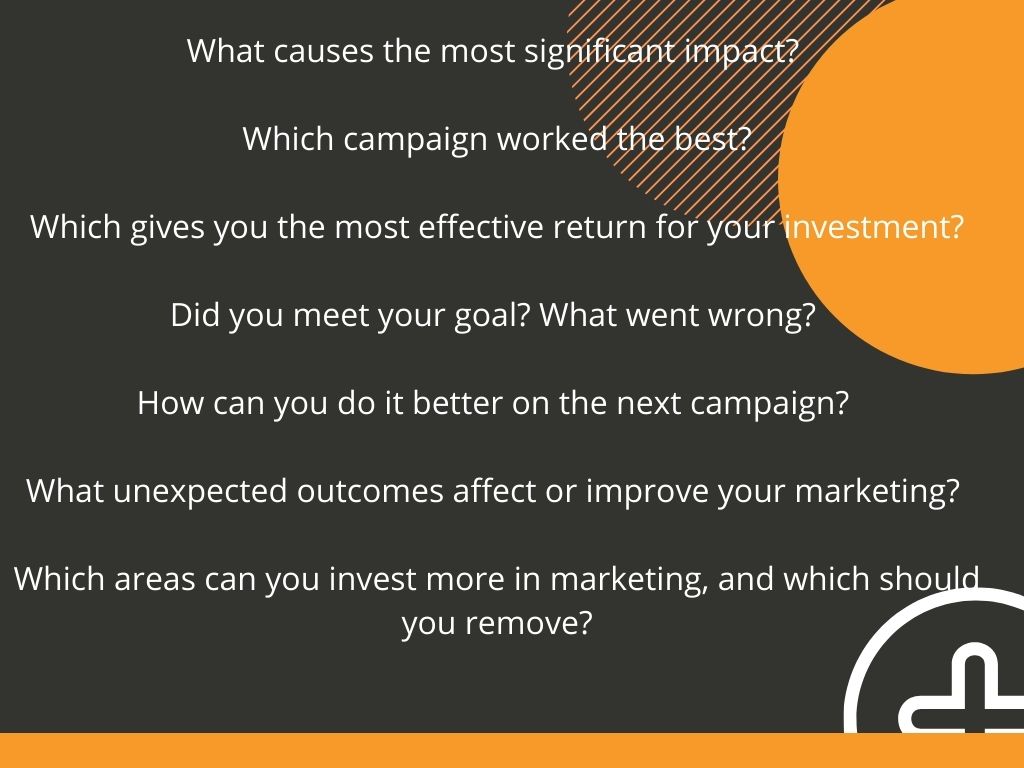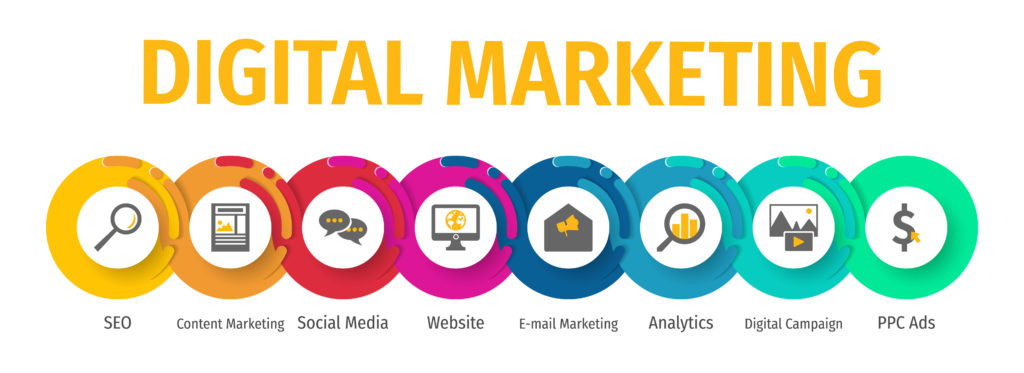
How to Make a Marketing Campaign step by step
Marketing is a powerful tool when used correctly. However, many believe the outcomes will be immediate by just posting or making one campaign. Unfortunately, it is not that easy. Marketing takes time and planning. To obtain the desired results, you must prepare to achieve the goals you set for your business.
Now that you know that marketing is all about time and planning, let’s learn how to do a step-by-step plan to grow your business.

How to Make a Successful Product or Service
Crafting a remarkable marketing campaign requires a deep understanding of the intricacies of your product or service. Each campaign should encompass unique and intimate characteristics that set your offering apart. To achieve a distinctive position in the target market, your campaign must highlight the benefits and differentiation elements that make your product or service exceptional.
Your Campaign’s Essence
Thus, showcasing how your product differs from the competition becomes crucial. Your marketing campaign must convincingly portray your offering as the optimal choice for consumers. To accomplish this, conducting a thorough market study becomes imperative, encompassing essential aspects such as potential customers, purchasing patterns, and competitors.
But that’s not all! Familiarizing yourself with market dynamics and comprehending buyer behavior’s impact on your marketing campaigns is equally vital. Additionally, understanding how your product can leverage brand archetypes to captivate potential customers is key.
Moreover, it’s important to note that seemingly small details, such as colors and music, profoundly influence how your audience perceives your product or service. Therefore, attaining a deep understanding of your potential clients is essential to running a profitable and successful campaign.
In essence, when executing marketing campaigns, it is imperative to consider every element. The details ultimately shape the interaction and determine the acceptance and success of your campaign. By carefully attending to these aspects, you pave the way for an impactful and resonant marketing endeavor.
Define your Customers Target
Developing a successful marketing campaign necessitates the prior definition of a target buyer. By thoroughly researching and understanding your customer persona, you can identify the most promising prospects for your business. This targeted approach not only saves you resources but also significantly enhances your chances of acquiring loyal customers.
However, it is essential to note that relying solely on demographic or geographic information may not provide a comprehensive understanding of your target audience. To ensure accuracy and effectiveness, it is recommended to gather a comprehensive range of information before initiating your campaign.
Before diving into campaign development, it is prudent to gather and organize all relevant data. Conducting tests and verifying that you have selected the appropriate customer target can help refine your approach. Various methods can be employed, such as in-person interviews, focus groups, social media surveys, email surveys, or even outsourcing the research to a third-party agency (depending on budget constraints).
By conducting thorough research and validation, you can align your marketing efforts with the needs and preferences of your target audience, ultimately maximizing your campaign’s impact and return on investment.
Before you start developing your campaign, having all your information handy will be good. Conduct a test to verify you selected the proper customer target; maybe that is not right for you. You can conduct in-person interviews, focus groups, social media surveys, email surveys, or use a third-party agency to research for you (if you have the budget).
Define Your Goals
What do you expect from a marketing campaign? That question will help you define your goals. They should be focused on what you yearn to gain for your business. First, however, keep in mind to think about six (6) goals that must always be part of your campaigns.

Brand awareness
Establishing and increasing brand awareness is a crucial goal for businesses seeking to leave a lasting impression on consumers and drive their purchasing decisions. Brand awareness not only ensures that your products are remembered during the buying process but also fosters familiarity with all products under your brand umbrella. Additionally, brand awareness encompasses positive experiences with your brand, building trust and confidence in your business.
Measuring the effectiveness of your brand awareness campaigns requires monitoring key metrics, such as increased social media and blog traffic, heightened engagement in chats and conversations, and improved responsiveness to surveys and other forms of audience interaction.
To promote brand awareness effectively, it’s important to establish a distinct personality for your brand, aligning it with relevant archetypes that resonate with your target market. Building connections with your audience is crucial in this process, and there are several impactful methods you can employ:
- Engage and captivate your audience through well-crafted articles that maintain their interest and offer valuable insights related to your brand.
- Foster connections with customers and prospective buyers through regular, engaging social media posts that provide a glimpse into your brand’s values, culture, and offerings.
- Showcase the unique features and benefits of your products by sharing relatable everyday experiences, demonstrating how your brand enhances customers’ lives.
- Emphasize the importance of your brand’s values and its commitment to community inclusion, resonating with consumers who prioritize socially responsible brands.
- Actively participate in community events, demonstrating your brand’s genuine involvement and connection with local or relevant causes.
By implementing these strategies, you can effectively elevate your brand’s visibility, foster meaningful connections with your audience, and solidify your brand’s place in the hearts and minds of consumers.
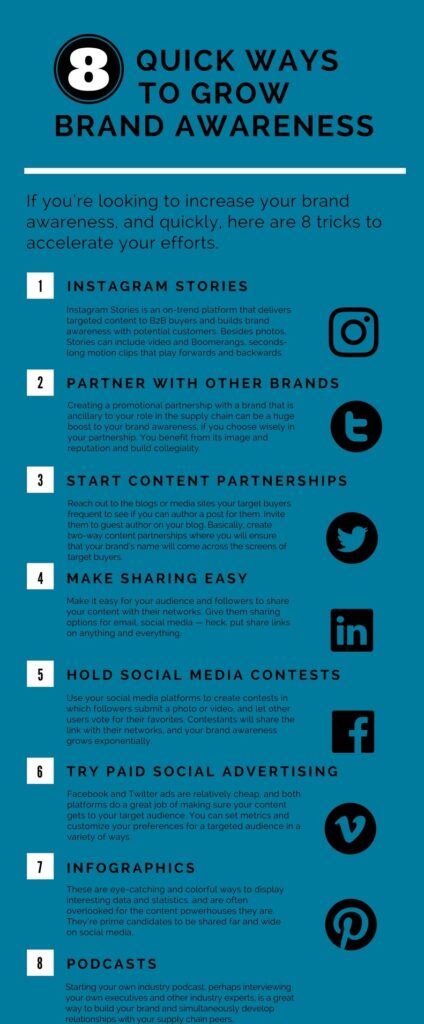
Good leads
A lead refers to a prospective customer who engages with your brand or product by making an inquiry or expressing interest. Generating leads involves creating touchpoints, which are points of contact between your brand and potential customers. The goal is to guide these leads through the touchpoint funnel, where they are nurtured and have the highest likelihood of converting into actual buyers.
To generate leads effectively, it is essential to employ a touchpoint funnel strategy. The touchpoint funnel comprises various stages that potential customers progress through, from initial awareness to final conversion. Each touchpoint along the funnel serves as an opportunity to engage and interact with leads, nurturing them closer to becoming buyers.
These touchpoints can take many forms, such as website forms, social media interactions, email sign-ups, live chats, or even offline events. By strategically implementing touchpoints at different stages of the funnel, you can capture leads’ attention, provide valuable information, address their inquiries, and ultimately guide them towards making a purchase.
By utilizing a touchpoint funnel approach, you can effectively generate and nurture leads, increasing the likelihood of converting them into satisfied buyers. This systematic approach ensures a streamlined and efficient process for lead generation and conversion.
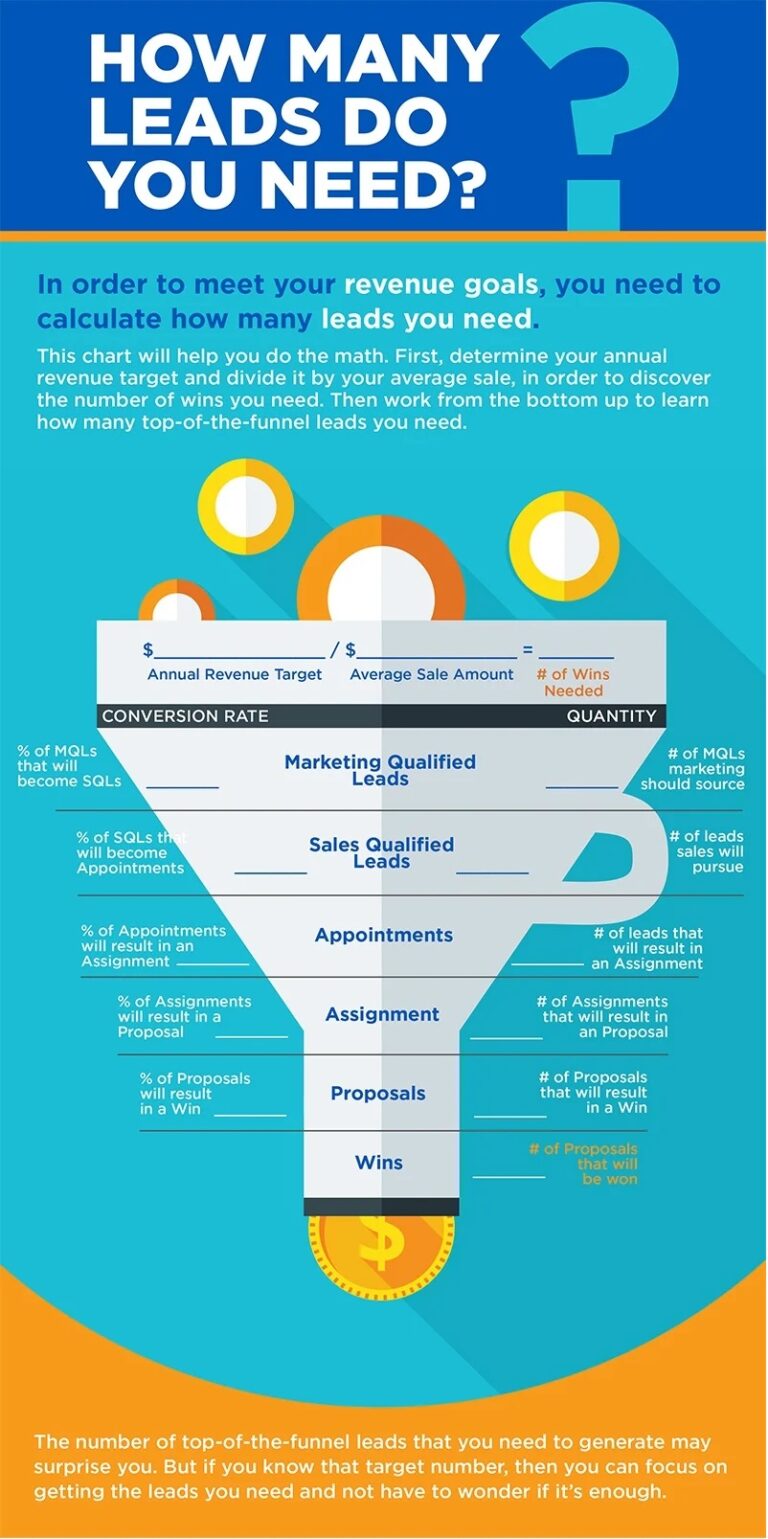
Measuring lead generation effectiveness can be accomplished through revenue attribution, a process that links sales directly to specific advertisements or marketing efforts. By utilizing revenue attribution, businesses gain insights into the sources that drive sales, enabling them to allocate their budget more effectively and prioritize areas that yield the highest returns.
Revenue attribution allows for a deeper understanding of which marketing channels, campaigns, or advertisements contribute most significantly to the generation of revenue. By attributing revenue to specific touchpoints, businesses can identify the key drivers of their sales and make informed decisions about resource allocation.
This process helps businesses optimize their marketing strategies by identifying the most successful channels and campaigns and investing more resources in those areas. By increasing the budget for high-performing channels, businesses can amplify their reach and impact, ultimately driving further revenue growth.
Implementing revenue attribution enables businesses to measure the direct impact of their marketing efforts on sales, providing valuable insights for future planning and optimization. By leveraging this approach, businesses can make data-driven decisions, maximize their return on investment, and ultimately achieve greater success in lead generation and revenue generation.
Convert into a Thought Leader
Aiming to become a leader in your industry is a fundamental goal for every business. Thought leaders are individuals or organizations recognized by society as experts in their respective fields, possessing a high level of knowledge and credibility.
Being perceived as a thought leader can significantly contribute to brand confidence and trust, leading to increased sales. Customers are more inclined to make purchases from businesses that have established a strong sense of trustworthiness.
Becoming a thought leader requires dedication and consistent effort. The initial step is to become an expert within your industry by acquiring in-depth knowledge and expertise. Once you have established yourself as an expert, it’s important to share your insights and knowledge through relevant content. This can include participating in webinars, engaging in industry discussions, developing professional blogs, or sharing valuable information through social media posts.
To gauge the impact of thought leadership efforts, several key call-to-action (CTA) metrics can be employed:
- Lead Generation: Measure the number of leads generated through various thought leadership initiatives.
- Form Submission: Track the number of form submissions indicating interest or engagement with your content.
- “Read More” Buttons: Monitor the clicks on “Read More” buttons to determine the level of interest in your content.
- Product or Service Link: Measure the click-through rate on links directing users to your products or services.
- Social Sharing: Track the number of shares and engagement on social media platforms to assess the reach and impact of your thought leadership content.
- Event Promotion: Monitor the response to event promotions, such as the number of registrations or attendance.
- Blog/Webinar Links: Analyze the traffic and engagement on your blogs or webinar pages to assess interest and audience engagement.
By utilizing these CTAs, you can effectively measure the impact of your thought leadership initiatives and gauge the level of engagement and interest from your target audience. This data can guide future strategies and help further establish your position as a thought leader in your industry.
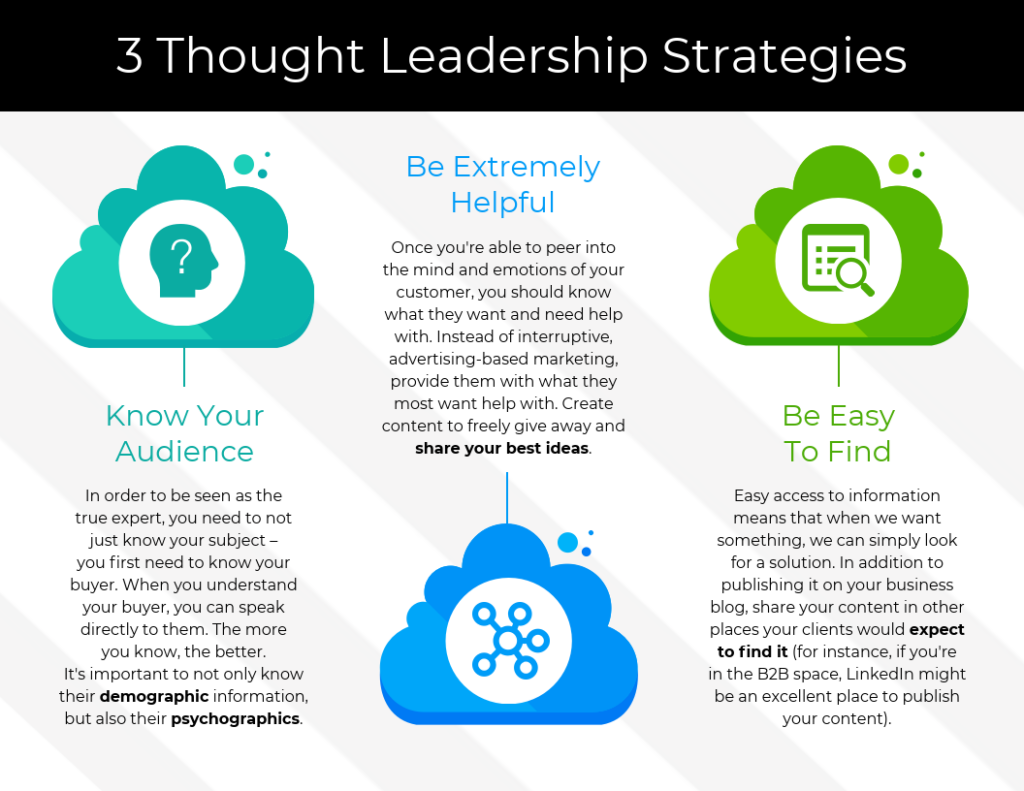
Increase Customer Value
Customer value, also known as brand value, refers to the significance that a customer holds for a brand, product, service, or any other business component. It is intricately connected to the customer’s perception of the value they receive in exchange for their investment, whether it be a purchase, participation, or engagement.
Enhancing customer value is best achieved through exceptional customer experiences. When businesses deliver well-executed services that provide a pleasurable and satisfying experience to their clients, it leads to an increase in customer value. This heightened value can result from factors such as personalized interactions, efficient problem-solving, superior product quality, or exceptional customer support.
Measuring the impact of increased customer value can be assessed through various indicators:
-
Positive Comments on Posts: Monitor the number of positive comments and feedback received on social media or other online platforms. These comments reflect the positive perception and satisfaction of customers, indicating an increase in their value for the brand.
-
Positive Word of Mouth: Observe instances where customers enthusiastically recommend or speak positively about your brand to others. Positive word of mouth acts as a strong indicator of increased customer value and satisfaction.
-
Recurring Customer Purchases: Track the frequency and consistency of customer purchases or engagement. Repeat business from customers is a clear sign that they find ongoing value in your offerings, leading to continued support and loyalty.
-
Referrals: Measure the number of referrals received from existing customers. A high number of referrals indicates that customers perceive enough value to promote your brand to others actively, showcasing their trust and satisfaction.
By monitoring these metrics, businesses can gain insights into the impact of their efforts to increase customer value. Positive comments, word of mouth, repeat purchases, and referrals serve as tangible indicators of the enhanced value customers place on the brand. This information can guide businesses in refining their strategies to deliver value-driven experiences and foster long-term customer relationships.

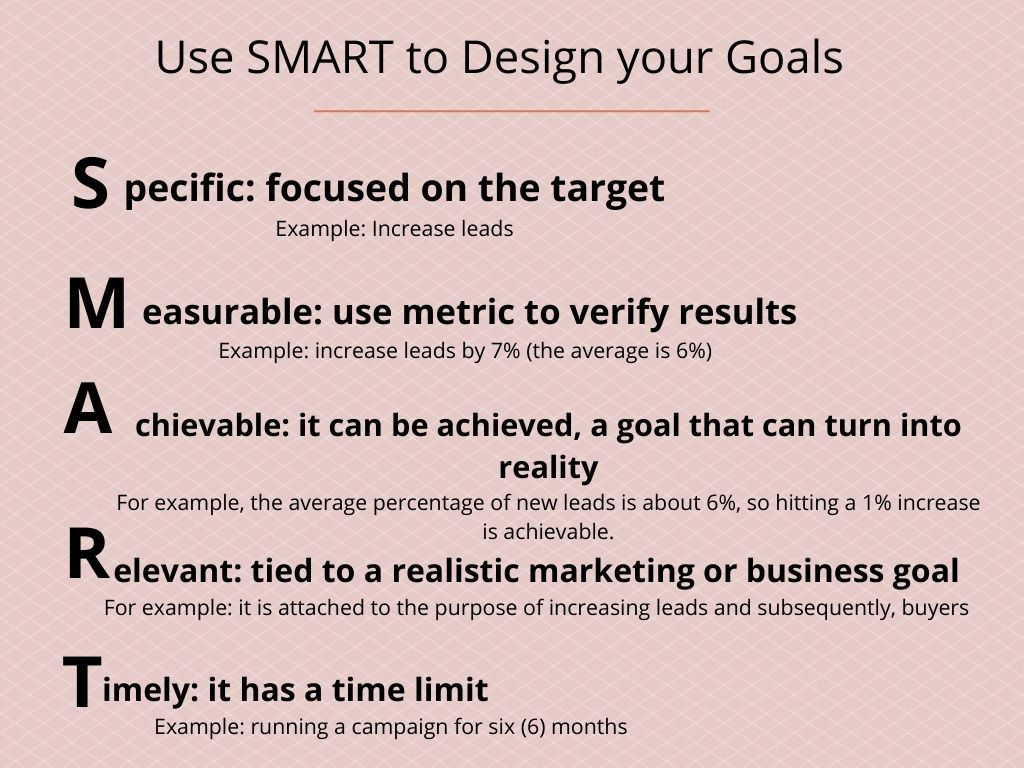
Enhance Social Media Presence
Undoubtedly, social media has emerged as a powerful tool for growing brand value and attracting potential customers. In today’s interconnected world, businesses need effective means to reach out to a global audience, and social media provides an ideal platform. The primary objective should be to establish and maintain strong connections with both potential and existing customers.
Engaging content plays a crucial role in achieving this goal. By creating captivating posts, blogs, videos, and images, businesses can capture the attention of their target audience and foster meaningful interactions. It is also important to optimize these content pieces with relevant keywords to improve search engine optimization (SEO) and enhance reachability.
Furthermore, social media platforms offer an excellent avenue for keeping customers informed about the latest trends, new products, and services. By regularly updating customers through social media, businesses can ensure customer satisfaction and maintain a sense of engagement and loyalty.
The impact of these social media efforts can be measured by monitoring the growth of followers and the level of participant engagement. An increase in followers indicates a growing audience that is interested in the brand and its offerings. Additionally, high levels of participant engagement, such as likes, comments, and shares, demonstrate that the content resonates with the audience and encourages active participation.
By tracking these metrics, businesses can gain valuable insights into the effectiveness of their social media strategies in growing brand value and attracting potential customers. A steady increase in followers and high participant engagement indicate a successful social media presence and the ability to connect with and expand the customer base.
Set Your Budget

Once you have defined your marketing goals, setting a budget becomes a more manageable task. Your goals provide clarity on the timeframe and intensity required for your marketing campaign. When developing a marketing budget, it is crucial to consider your return on investment (ROI). You want to invest in activities that are likely to yield returns. Understanding the purchasing power of your customers is key to ensuring your investment is well-placed, as their purchasing decisions will determine your ROI.
Every cent counts when allocating a marketing budget, so it is essential to set a realistic budget that allows for effective communication with your prospects and buyers. Here are some common expenses to consider when planning your marketing budget:
- PPC (pay-per-click) on Google or Bing
- Content development
- Graphics
- Email and mail marketing
- Paid ads
- Events and trade shows
- Video development
- Social media management
For example, if you are developing marketing for a product, your campaign may include elements such as research, competitive analysis, focus groups/surveys, product testing, software, social media management, product launch events, paid advertising, content development (case studies, demos, videos, social posts, etc.), and more.
Let’s assume you allocate $100 for each of these elements, totaling $1,400 per month. If you plan to run the campaign for a minimum of six months, your total budget would be $8,400.
Alternatively, platforms like Facebook or Instagram offer the option to pay per day. For instance, if you pay $5 per day, you would spend $155 in 31 days, and over a span of six months, your expenditure would amount to $930.
These numbers may seem significant for micro and small businesses, leading to concerns about budget constraints. Fortunately, Zona Shoppers is there to assist in mitigating these costs and supporting the development of small businesses. Their services can help alleviate some of the financial burden and facilitate the growth of your business.
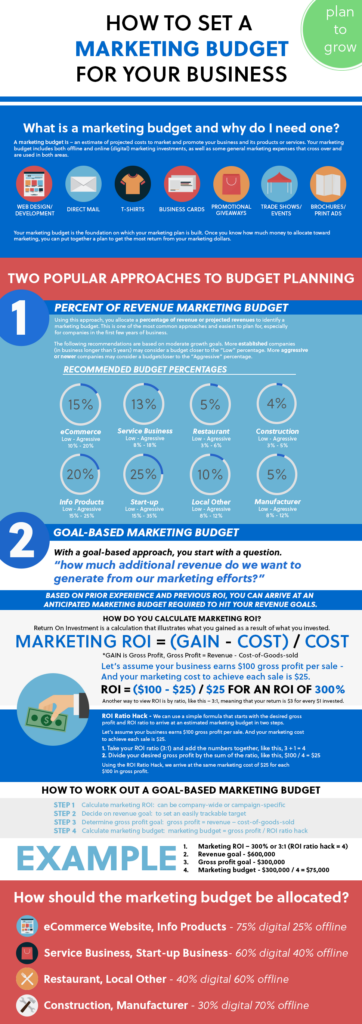
Select the Marketing Method

When selecting the most appropriate media for your campaigns, it is crucial to consider the platforms your prospects or buyers are actively using. Understanding your target audience’s media preferences allows you to effectively reach and engage with them. Additionally, it is important to align your media choices with your budget to ensure optimal resource allocation. Diversifying your campaign across multiple platforms can provide broader reach and maximize your exposure.
For example, you may choose to run campaigns on Instagram, Google, and Pinterest simultaneously. Each platform offers unique advantages and caters to different audience segments. By leveraging a mix of media channels, you can enhance your campaign’s effectiveness and capture the attention of various user demographics.
It is also essential to align your media choices with your campaign goals. Different platforms have varying levels of reach and serve specific purposes. Here are some general considerations:
- Facebook: Effective for communication and brand awareness, providing a wide reach and opportunities for engagement.
- Instagram: Ideal for fostering connections, building relationships, and discovery of visual content.
- Twitter: Suitable for content discovery and real-time conversations, enabling you to engage with trending topics and connect with your audience.
- Pinterest: Valuable for expanding product information, particularly for visual and lifestyle-oriented content, allowing users to discover and save ideas.
- LinkedIn: Well-suited for thought leadership, professional networking, and business growth, offering opportunities to establish credibility and connect with industry professionals.
By understanding the strengths and purposes of each platform, you can strategically select the most appropriate media channels to align with your campaign goals and effectively reach your target audience.
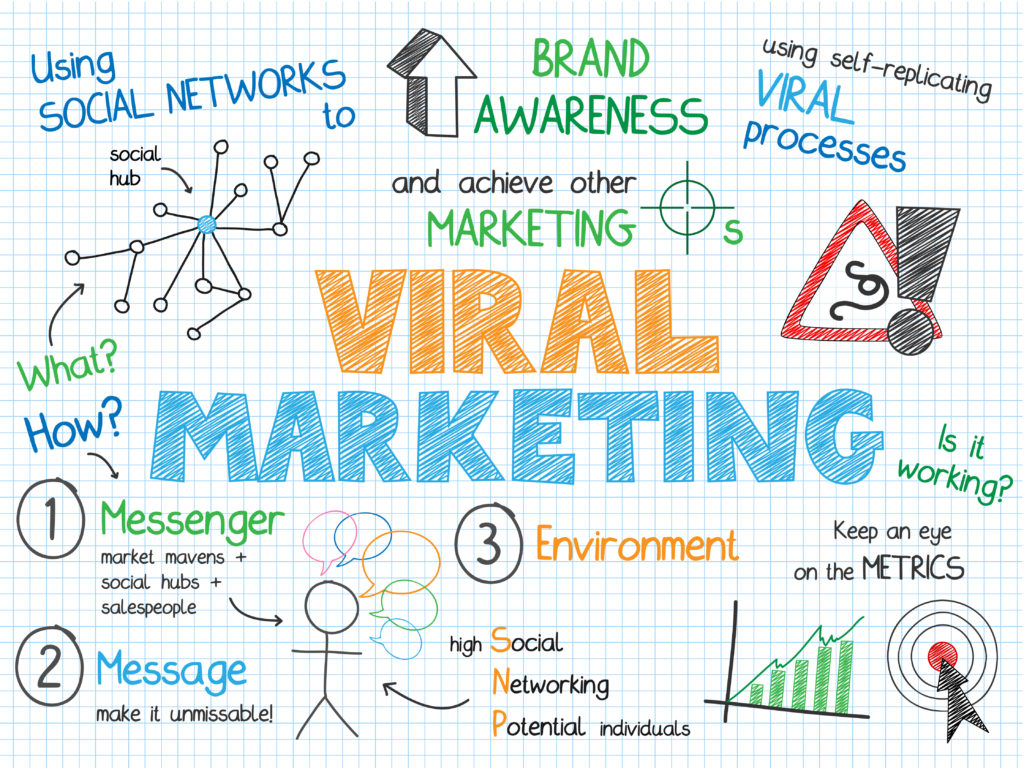
Develop Your Messaging
When developing a marketing campaign, it is vital to consider what you want your prospects or buyers to know, learn, see, hear, and understand. The primary objective is to communicate key messages and shape perceptions about your brand or product. Here are important considerations for crafting a compelling campaign:
-
Key Messages: Clearly define the core messages you want to convey and ensure they are convincing. Support your messages with factual and objective information, avoiding fabrication. Today’s consumers can easily fact-check through online resources like Google.
-
Target Audience Relevance: Tailor your campaign to resonate with the end receivers of your message. Understand their preferences, language, and cultural nuances. Striking the right balance in phrases, examples, and information ensures relatability and enhances campaign effectiveness.
-
Problem-Solution Approach: Instead of directly addressing the problem, consider employing indirect methods to present the solution. Create a narrative that engages your audience and gradually guides them toward understanding how your product or service can solve their pain points.
-
Conciseness: Strive for concise communication rather than lengthy explanations. Short and precise messages often have a greater impact and resonate more effectively. Focus on powerful marketing messages that capture attention and leave a lasting impression.
-
Catch, Offer, and Hook: Capture the interest of your audience by incorporating attention-grabbing elements. Present an enticing offer or hook that piques their curiosity and motivates them to inquire further. This could be in the form of limited-time promotions, exclusive deals, or unique value propositions.
By considering these factors, you can craft a compelling marketing campaign that effectively communicates your message, engages your target audience, and encourages them to take the desired action. Remember to continuously monitor and refine your campaign based on feedback and performance metrics to ensure ongoing success.
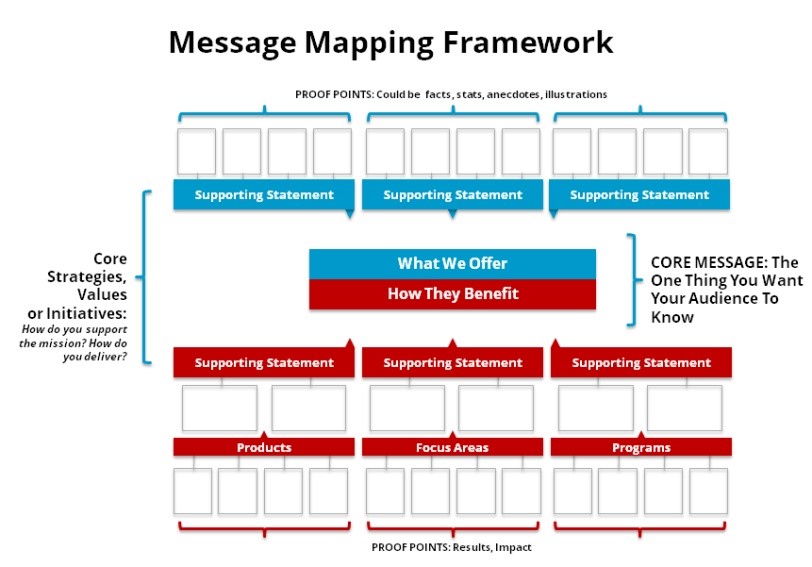
Metrics
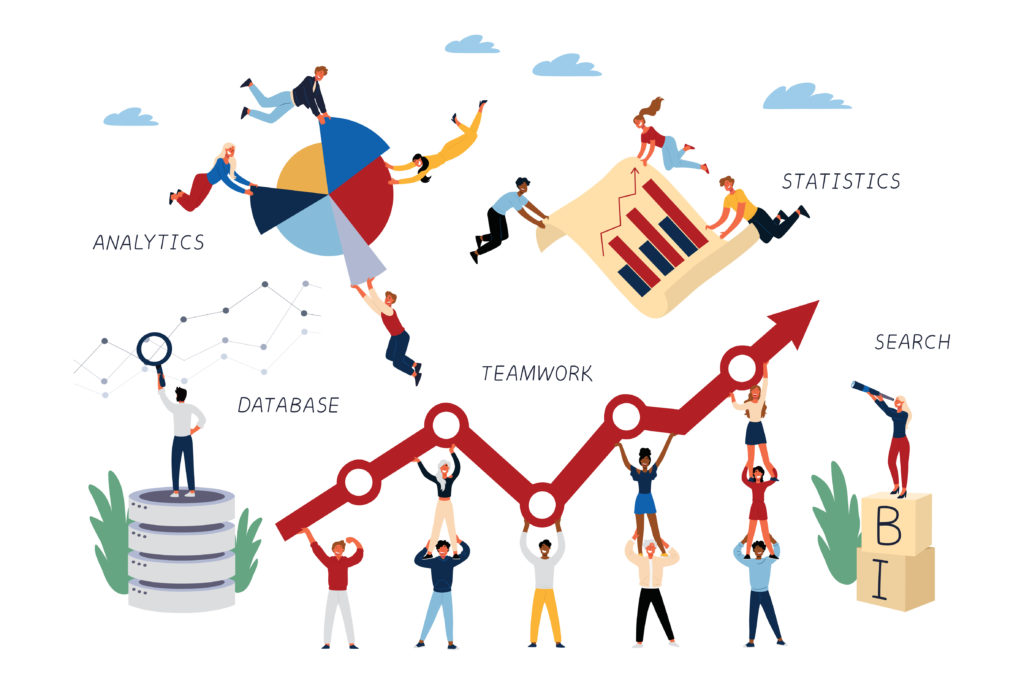
Measuring the outcomes of your marketing campaign is crucial to assess its effectiveness and make informed decisions for future strategies. Here are important steps to consider when measuring your campaign outcomes:
-
Proper Media Selection: Evaluate whether you have chosen the appropriate media channels for your product or service. Analyze the reach, engagement, and response generated from each media platform to determine their effectiveness in reaching your target audience.
-
Target Market Relevance: Assess how well your campaign resonates with your target market. Monitor their engagement levels, response rates, and feedback to gauge if the messaging and communication tactics are effective and aligned with their preferences.
-
Running the Campaign: During the campaign’s duration, closely monitor and track key metrics that align with your campaign goals. These could include metrics such as website traffic, coupon usage, button clicks, social media engagement, conversions, or lead generation. By regularly reviewing these metrics, you can determine if your hooks and calls to action are generating the desired response and engagement.
-
Efficiency and Budget: Continuously evaluate the campaign’s efficiency and cost-effectiveness in relation to your budget. Monitor the return on investment (ROI) and assess whether the campaign meets your goals and expectations.
-
Campaign Review: After the campaign, conduct a thorough review of its overall performance. Analyze the collected data, including sales figures, customer feedback, customer acquisition rates, and campaign-specific metrics. This evaluation will provide insights into the campaign’s overall success and areas for improvement.
By systematically measuring these outcomes, you can gain valuable insights into the effectiveness of your marketing campaign. This information will help you make data-driven decisions, optimize future strategies, and improve your marketing efforts’ overall impact and success.
All those questions should be part of your outcome scenario. The more questions you develop, the more you learn to create great marketing campaigns for your products.
Tip: You can also verify your outcomes as such:
-
Organic Visits: You can use Google Analytics to track the number of organic visits to your website or physical store. Google Analytics provides valuable insights into website traffic sources, allowing you to measure the effectiveness of your organic search efforts.
-
Email Metrics: Tracking the number of emails sent versus the number of emails opened is an important metric to gauge the engagement and effectiveness of your email campaigns. Specialized email marketing software often offers analytics and tracking features to measure open rates, click-through rates, and other relevant email metrics.
-
CPC (Cost Per Click): To evaluate the performance of your CPC campaigns, you can use Google Analytics to verify the number of clicks your ads receive. Google Analytics provides data on click-through rates, ad impressions, and conversion rates, helping you assess the success of your paid advertising efforts.
-
Social Media Engagement: Measuring the level of engagement on your social media posts, blogs, and other social media content is crucial to understanding the impact of your social media efforts. Specialized social media analytics tools or the built-in analytics provided by social media platforms allow you to analyze metrics such as likes, comments, shares, and reach, providing insights into the effectiveness of your social media strategy.
By utilizing these methods and tools, you can accurately track and verify the outcomes of your marketing campaigns, enabling you to make data-driven decisions and optimize your marketing strategies for better results.
Marketing Terms You Should Know!

These are terms you should know before starting a campaign. Words that will make your job more manageable once you learn their concept and how you can take advantage of the application. Here is a list of the most used terms in marketing.
-
A/B Test (Split Test): A method used to compare different variables or elements in marketing, such as wordings, phrases, videos, images, etc., to determine which performs better for a specific task or objective.
-
Brand Awareness: The level of recognition and familiarity consumers have with a particular brand. Building strong brand awareness can lead to consumer preference and selection advantages during the purchasing process.
-
Bounce Rate: The percentage of a website or page visitors who leave without interacting or navigating further within the site. A high bounce rate typically indicates a lack of engagement or relevance of the page content.
-
Customer Persona (Buyer Persona): A representation of an ideal prospect or customer created through research and analysis. Customer personas provide insights into target customers’ characteristics, preferences, and behaviors, guiding marketing strategies and understanding prospect likes and dislikes.
-
Call to Action (CTA): A specific instruction or prompt that encourages a desired action from the viewer or prospect. CTAs aim to incite interaction or engagement, such as clicking a button, subscribing to a newsletter, or making a purchase.
-
Content Marketing: Creating and distributing valuable and relevant content to attract and engage a target audience. Content marketing can take various forms, such as blog posts, social media content, videos, references, white papers, etc., with the goal of raising awareness and driving specific actions.
-
Conversion: The act of getting a prospect or viewer to respond to a call to action, resulting in a desired outcome, such as signing up for an email subscription, making a purchase, or completing a specific action.
-
Lead Generation: The process of attracting and capturing potential leads or prospects, often through various strategies and tactics such as content offers, web forms, landing pages, or events. The focus is on acquiring contact information or generating interest for further nurturing and converting leads into customers.
-
Qualified Lead: An individual or business that has been identified as a strong potential customer or fit for a particular product or service based on predefined criteria or qualification process.
-
Retargeting: A marketing technique that displays targeted ads to qualified leads or individuals who have shown interest in a product or service based on their previous interactions or online behavior.
-
Social Media Marketing: Engaging with potential customers and promoting products or services through social media platforms such as Facebook, Instagram, Pinterest, etc. It involves creating content, running campaigns, and building relationships with the target audience.
-
Social Proof: The psychological phenomenon of people accepting the actions or choices of others as correct or appropriate and subsequently imitating them. Social proof is utilized in marketing through testimonials, customer reviews, survey participation, and sales data to build trust and influence purchasing decisions.
-
Unique Selling Point (USP): Something distinctive or unique about a business, product, or service that sets it apart from competitors and provides a competitive advantage.
-
Value Proposition: The unique value or benefits a product or service offers customers. It is a critical element in marketing as it communicates the reasons why customers should choose a particular product or service over alternatives.


